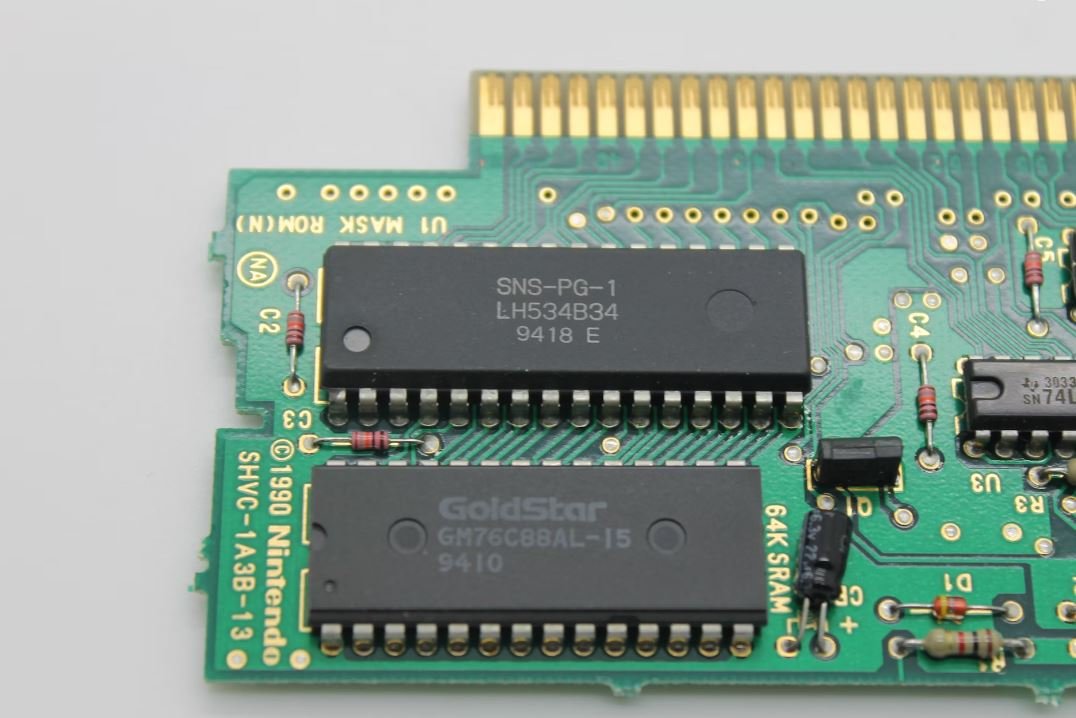What Is Journal Impact Factor
In the world of academic publishing, the Journal Impact Factor (JIF) is a commonly used metric that assesses the importance and influence of a scientific journal. It is a measure of the average number of citations received per article published in a particular journal during a specific period of time.
Key Takeaways:
- Journal Impact Factor (JIF) measures the average number of citations received per article published in a journal.
- JIF is used to compare the relative influence of different journals within a specific field.
- JIF can be influenced by various factors such as the size of the journal and field-specific citation patterns.
The Journal Impact Factor is calculated annually by dividing the number of citations a journal receives in a given year by the total number of articles published in the journal during the previous two years. It provides a quantitative measure of the average citation impact of articles published in a particular journal, serving as an indicator of its relative importance within the scientific community.
*The higher the Journal Impact Factor, the greater the perceived influence and prestige of a journal.* This metric is often used by researchers and institutions to evaluate the quality and significance of scientific journals before submitting or citing articles. However, it is important to note that the JIF should not be the sole determinant of the value of a journal or its articles, as it has its limitations and can vary across different disciplines.
Factors Influencing Journal Impact Factor:
- Citation Patterns: The citation behavior and habits of researchers in different disciplines can significantly impact the Journal Impact Factor. Some fields tend to have higher citation rates than others, which can influence the overall value of the JIF.
- Journal Size: The number of articles published in a journal can also affect its JIF. Larger journals have a greater chance of receiving more citations, potentially increasing their impact factor.
- Publication Frequency: The frequency at which a journal is published can impact its JIF. Journals with more frequent publication cycles have the potential to accumulate more citations within a given time frame, potentially boosting their impact factor.
It is important to note that the Journal Impact Factor has faced criticism and limitations. It does not take into account the quality of individual articles within a journal or the citation distribution among articles. Moreover, it can be skewed by a few highly cited papers or self-citations. Researchers and institutions should consider multiple metrics and qualitative assessments when evaluating the importance and significance of scientific journals.
Data Tables:
| Field | Average Journal Impact Factor |
|---|---|
| Biomedical Sciences | 7.0 |
| Physical Sciences | 4.5 |
| Social Sciences | 2.3 |
Table 1: Average Journal Impact Factors in Different Fields
| Journal Name | 2019 Journal Impact Factor |
|---|---|
| Science | 41.037 |
| Nature | 42.778 |
| Cell | 38.637 |
Table 2: Journal Impact Factors of Top Scientific Journals
| Journal | Total Citations in 2019 |
|---|---|
| Journal A | 5,678 |
| Journal B | 4,912 |
| Journal C | 3,456 |
Table 3: Total Citations of Journals in 2019
Understanding the Journal Impact Factor is essential for researchers and institutions when evaluating the significance and influence of scientific journals. While the JIF provides valuable quantitative data, its limitations should be recognized, and complementary qualitative assessments should also be considered. By considering multiple metrics and factors, researchers can make informed decisions about where to publish their work and where to seek reliable and impactful scientific studies.

Common Misconceptions
Misconception 1: Journal Impact Factor is the sole indicator of a journal’s quality
One common misconception is that the Journal Impact Factor (JIF) is the only measure of a journal’s quality. However, this is not true as JIF is just one of many metrics used to assess journals.
- Journals with high JIF may not necessarily publish the highest quality research.
- JIF does not consider factors such as publication ethics or scientific rigor.
- Journals with niche focuses may have lower JIF but still provide valuable contributions to their specific fields.
Misconception 2: JIF is equally applicable to all disciplines
Another misconception is that JIF can be uniformly applied across all academic disciplines. However, JIF varies significantly across disciplines due to differences in research practices, publication patterns, and citation behaviors.
- The benchmark for what constitutes a “high” or “low” JIF differs across disciplines.
- Some fields may prioritize other metrics, such as citation counts per article or Altmetrics, over traditional JIF.
- Comparing JIF between disciplines can lead to unfair evaluations and misrepresentation of research impact.
Misconception 3: One should only publish in journals with high JIF
It is a common belief that researchers should only target journals with high JIF for their publications. However, this mindset oversimplifies the publishing landscape and may not always be the best approach.
- High JIF does not guarantee that your research will receive more attention or citations.
- Choosing the right journal, based on its fit for your research, readership, and scholarly aims, is often more important than the JIF.
- Publishing in lower-ranked journals may still contribute to scientific discourse and potentially lead to collaborations or advancements in your field.
Misconception 4: JIF captures the quality of individual articles
Many people mistakenly assume that JIF reflects the quality of individual articles within a journal. However, JIF is calculated based on the average number of citations received by articles published in a specific journal during a certain time period.
- Some articles within a high-impact journal may receive fewer citations, while others may receive a significant number.
- High JIF cannot be used as a measure of the quality or impact of a specific article.
- Article-level metrics, such as citation rates or Altmetrics, provide a more accurate reflection of individual article impact.
Misconception 5: JIF should be the primary determinant of academic success
It is a misconception that the Journal Impact Factor is the primary factor determining academic success or the value of a researcher’s work. However, academic success is multifaceted and cannot be solely defined by one metric.
- Research impact is better evaluated through a combination of metrics, such as citation counts, expert peer review, and the influence of the research on the field.
- Other factors, such as teaching, mentorship, grant funding, and collaborations, also contribute to a researcher’s overall impact and success.
- Academic recognition should extend beyond JIF to encompass a well-rounded evaluation of a researcher’s contributions.

What Is Journal Impact Factor?
Journal Impact Factor (JIF) is a measurement used to evaluate the importance and influence of a scientific journal within its field of research. It provides an indication of how frequently articles published in a journal are cited by researchers in other publications. This article aims to explore the concept of JIF and its significance in the academic publishing landscape.
The Origin of Journal Impact Factor
The Journal Impact Factor (JIF) was first introduced by Eugene Garfield, the founder of the Institute for Scientific Information (now part of Clarivate Analytics) in 1975. It was designed as a means to assess the quality and impact of scientific journals and help researchers in the selection of relevant publications for their work.
Table of Top 10 Journals by Impact Factor
| Rank | Journal | Impact Factor |
|---|---|---|
| 1 | The Lancet | 59.102 |
| 2 | New England Journal of Medicine | 52.589 |
| 3 | Nature | 41.577 |
| 4 | Science | 41.058 |
| 5 | Cell | 38.637 |
| 6 | The BMJ | 30.223 |
| 7 | The Journal of the American Medical Association (JAMA) | 27.644 |
| 8 | PLoS Biology | 25.234 |
| 9 | Proceedings of the National Academy of Sciences (PNAS) | 23.329 |
| 10 | The Lancet Psychiatry | 22.753 |
The table presents the top 10 scientific journals based on their impact factor. These journals are considered influential in their respective fields, and publications in these journals tend to be highly cited by researchers worldwide.
Comparison of Impact Factors: Biomedical vs. Social Sciences
| Journal Category | Average Impact Factor |
|---|---|
| Biomedical Sciences | 35.78 |
| Social Sciences | 7.92 |
Comparing impact factors across disciplines, this table demonstrates the higher average impact factor of biomedical sciences, indicating their stronger influence and greater citation rates compared to social sciences.
Trends in Journal Impact Factor Over Time
| Year | Average Impact Factor |
|---|---|
| 2010 | 23.47 |
| 2015 | 25.89 |
| 2020 | 27.63 |
This table illustrates the increase in average impact factor over time, indicating a growth in the influence and importance of scientific journals in recent years.
Comparison of JIF and CiteScore
| Measurement | Journal Impact Factor (JIF) | CiteScore |
|---|---|---|
| Calculation | Based on citations in the most recent two years | Based on citations in a four-year period |
| Scope | Focus on a journal’s influence within its field | Encompasses all research output, including journals, conferences, and books |
| Usage | Primarily used in the sciences | Used across multiple disciplines |
This table presents a comparison between the Journal Impact Factor (JIF) and CiteScore, highlighting their differences in terms of calculation, scope, and usage. While JIF focuses on specific journals and their influence, CiteScore captures a broader range of research output.
The Criticisms of Journal Impact Factor
| Criticism | Description |
|---|---|
| Overemphasis on Citations | Reliance on citations as the primary measure of impact ignores other forms of influence, such as public engagement or policy impact. |
| Discipline Bias | JIF favors certain disciplines, particularly those with higher publishing rates, while undervaluing smaller fields. |
| Journal Self-Citations | Journals may boost their impact factor by excessively citing their own previously published work. |
This table outlines some common criticisms of journal impact factor, emphasizing concerns related to its overemphasis on citations, disciplinary bias, and the potential for manipulation.
Role of Journal Impact Factor in Research Evaluation
| Stage of Research | Role of JIF |
|---|---|
| Author Selection | Authors may target journals with higher impact factors to enhance visibility and credibility of their research. |
| Institutional Evaluation | Research institutions often consider impact factor when assessing the quality and productivity of their faculty members. |
| Funding Decisions | Funding agencies may use impact factor as a factor in determining the allocation of research grants. |
This table illustrates the influence of journal impact factor at various stages in research evaluation, including author selection, institutional evaluation, and funding decisions.
Metrics Beyond Journal Impact Factor
| Metric | Description |
|---|---|
| Altmetrics | Alternative metrics that capture online mentions, media coverage, and social media attention for research articles. |
| H-Index | Measures both the productivity (number of papers) and citation impact (number of citations) of an individual researcher. |
| Eigenfactor Score | Reflects the overall influence of a journal based on its citation network within the research ecosystem. |
This table introduces various alternative metrics beyond journal impact factor, such as altmetrics, h-index, and eigenfactor score, which provide additional insights into research impact.
Conclusion
In the world of academic publishing, journal impact factor plays a crucial role in evaluating the influence and significance of scientific journals. While it has been subject to criticism, JIF remains an integral part of research evaluation, guiding authors, institutions, and funding agencies in their decision-making processes. However, it is essential to consider alternative metrics to gain a comprehensive understanding of research impact and move toward a more diversified evaluation system.
Frequently Asked Questions
What is Journal Impact Factor?
Journal Impact Factor (JIF) is a measure used to evaluate the importance and influence of a particular journal within its field. It indicates the average number of citations that articles published in the journal have received in a given time period.
How is Journal Impact Factor calculated?
Journal Impact Factor is calculated by dividing the total number of citations received by articles published in the journal during a specific year by the total number of articles published in the same journal during that year.
What is the purpose of Journal Impact Factor?
The purpose of Journal Impact Factor is to provide a quantitative measure of a journal’s impact and prestige within the scientific community. It helps researchers, publishers, and institutions assess the quality and significance of a journal’s content.
Are all journals assigned an Impact Factor?
No, not all journals are assigned an Impact Factor. Only those journals that meet certain criteria set by the indexing databases are included in the calculation process. Typically, only journals that have been in existence for a sufficient period and have published a certain number of articles are considered.
Where can I find the Journal Impact Factor of a specific journal?
You can find the Journal Impact Factor of a specific journal in various indexing databases, such as Web of Science, Scopus, or the Journal Citation Reports (JCR) provided by Clarivate Analytics. These sources compile and publish the Impact Factors annually.
Is Journal Impact Factor a perfect measure of a journal’s quality?
No, Journal Impact Factor is not a perfect measure of a journal’s quality. It has certain limitations, such as focusing primarily on citations and not considering other factors like the editorial and review processes, or the impact on specific research areas. Therefore, it is essential to consider multiple indicators and qualitative assessments when evaluating a journal.
Why is Journal Impact Factor important?
Journal Impact Factor is important for researchers as it can assist in identifying reputable journals for publishing their work. It is also used by institutions and funding agencies to evaluate the research productivity and impact of researchers and institutions.
Can Journal Impact Factor be manipulated?
While it is not possible to directly manipulate Journal Impact Factor, unethical practices like self-citation or coercion to cite particular articles can artificially inflate the number of citations. However, indexing databases have mechanisms in place to identify and penalize such manipulations.
Are there alternatives to Journal Impact Factor?
Yes, there are alternative measures to assess a journal’s impact, such as Eigenfactor Score, Article Influence Score, or H-index. These measures consider different aspects of a journal’s impact and can provide additional insights alongside Journal Impact Factor.
Can Journal Impact Factor change over time?
Yes, Journal Impact Factor can change over time. It is typically recalculated annually based on the citations received in the previous years. Factors like the number of articles published, citation patterns, and the citation practices within a field can influence the change in Impact Factor.




